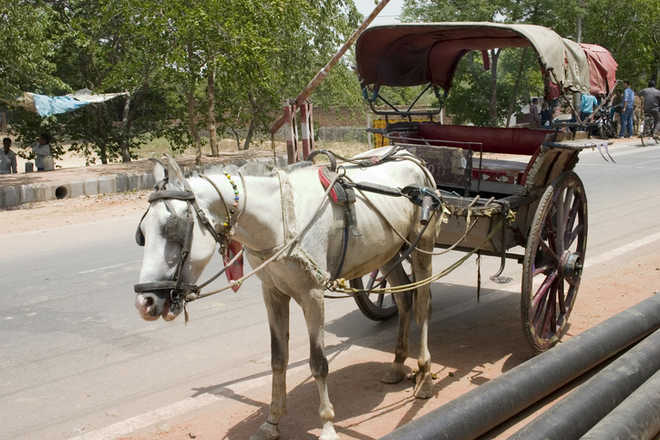Romancing the tonga
Kirti Dua
THE tonga remained an important mode of transport for many decades in our country. It was part of our culture and tradition and played a significant role in many Hindi films, notably Sholay. My 84-year-old uncle, who migrated from Lahore to Delhi in 1947, fondly remembers his cousin’s baraat which went to a nearby village on tongas. There used to be tonga stands in the cities and some of the famous routes are still remembered, like the one from Connaught Place to Sadar Bazaar in Delhi. On the way to Gulmarg in the early 1980s, the trotting of the horse, with chinar trees on both sides of the road, still echoes in my ears. With the aggressive global growth of the automobile industry, autorickshaws have replaced the tonga and the chhota hathi (goods carrier) has taken the place of the horse cart.
In Ludhiana, Kewal Krishan is the only one around who does repairs for horse accessories like saddles, bridles, halters, reins etc. In this city, tongas have become a rarity. There are just five families that are maintaining about 100 white (nukra breed) horses and earning a livelihood by using them at marriage functions. Unfortunately, this seasonal business is not going to sustain for long. Only a few bridegrooms use the horse/buggy for their baraat.
In some pockets of Amritsar and Lucknow’s Imambara, one can still enjoy the tonga ride. Once when I came out of the Hardwar railway station, I heard the call of a tongewala. I occupied the front seat and we started moving towards Har-ki-Pauri. The crackling of the cart, the tongewala’s posture, his small whip, the different types of sounds he used for communicating with the horse, and the animal’s own sounds were mesmerising. I initiated a dialogue with him. He was doing this job since childhood and earned Rs 300-400 daily. His two sons were employed elsewhere. It cost him around Rs 200 every day to feed his horse. Then there was expenditure on the treatment of the sick horse and repair of the cart. I asked him about his average savings. He jokingly replied: “Sir, there are many days when I barely break even. What I’m left with are just jhootey (joyrides).”









